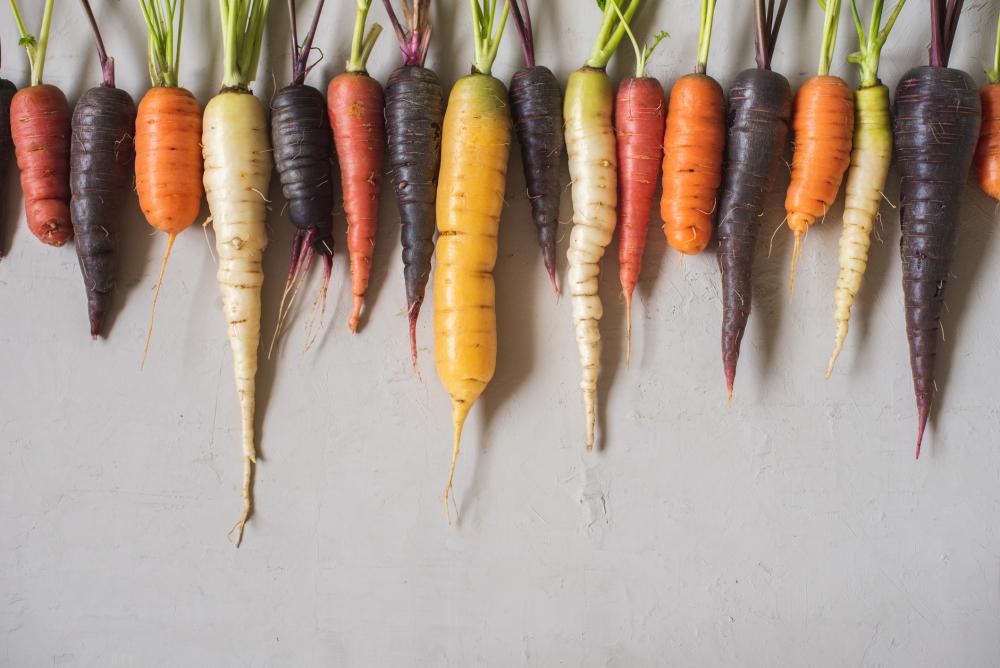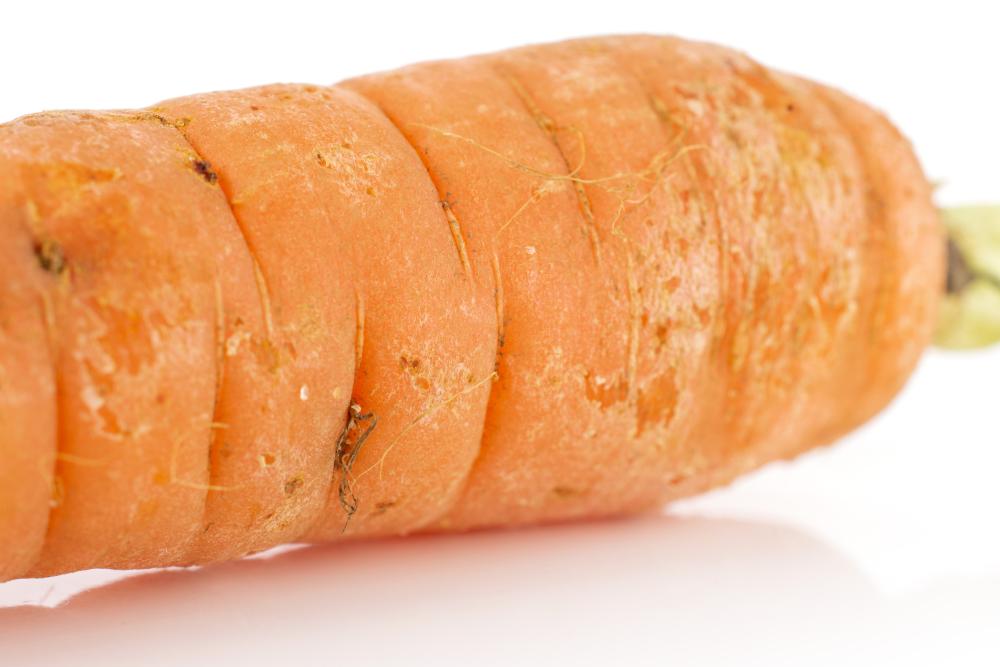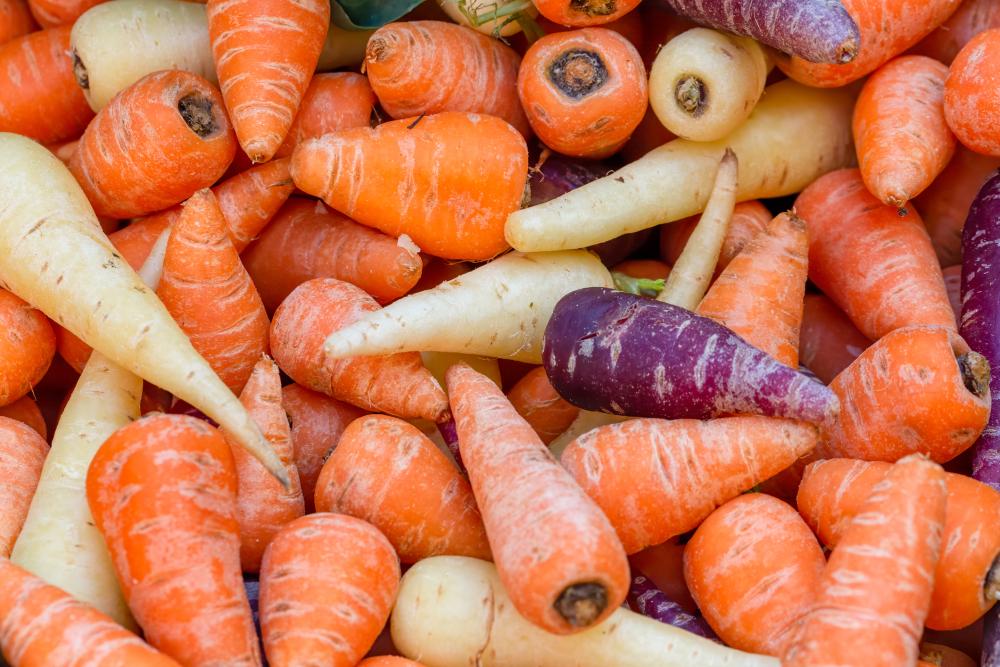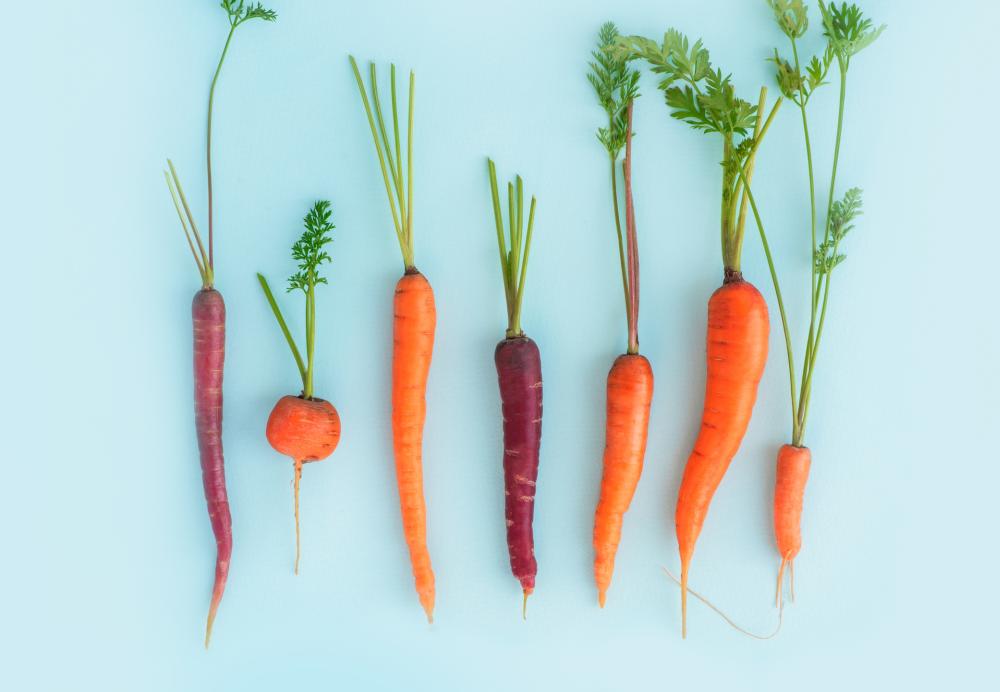Carrot Types, Varieties, And Hybrids To Grow
The humble carrot comes in many colors, shapes, sizes, and flavors. While the slender orange carrot is the dominant variety that you often see in supermarkets, it’s by no means the only one around. And one of the joys of gardening is that you get to try out different carrot hybrids, types, and varieties and use them in various recipes.
So if you’ve limited your carrot options to just one or two, it’s time to expand your gardening horizons. This guide covers the main carrot types, the most popular varieties, and some carrot hybrids worth their salt.
Carrot Types
To help you navigate the intricate world of carrot varieties, we’ll break the veggie down to its basic types. Each type has specific characteristics, from taste and size to color. I recommend planting a couple or more varieties of each type every season. That way, you’ll narrow down your favorites in a short time. Here are the 5 carrot types.
1. Chantenay Carrot
A small carrot type distinguished with their stout and short roots. On average, the carrot will not grow any longer than 6 inches no matter how great the soil and growing conditions are. And since they’re about 3 inches thick, these carrots have a cone shape. Since they don’t penetrate the soil deeply, the Chantenay carrot type doesn’t require loose or sandy soil like other types. In fact, if your garden soil is clay, heavy, or even rocky, this is the right carrot type to grow. Just make sure to harvest them when they’re around 5 inches since they get woody as they get larger.
2. Nantes Carrot
A very popular carrot type for home growing. The average carrot grows to about 7 inches long with a pointed tip. But the best part is they grow in the kind of soil that most other carrot types will not thrive in. As the carrots are less prone to crack or become twisted, even clay and rocky soils are good without the need to amend them. The ripe carrots are sweet and juicy.
3. Imperator Carrot
This is the common carrot type that you’ll see in the supermarket. The Imperator carrot is long and slender with no twists or scars. But to get this type to grow successfully in your garden, you’ll need sandy or loamy soil with about one foot of depth. That helps the roots develop easily and grow to these large sizes. The only drawback about this type is that the carrot is easy to break, so extra care is required when harvesting the ripe carrots.
4. Mini Carrot
Mini carrots are ideal for containers and shallow garden beds. You can harvest them as soon as they’re a couple of inches long to get the most out of them in terms of flavor and taste. Their small size makes them a good choice for rocky soil since the debris doesn’t impact the carrot’s growth.
5. Danvers Carrot
Originally from Danvers, Massachusetts, these carrots are long, slender, and with round tips. If you’re just starting with carrot gardening, this is the type to begin with. It’s easy to grow, doesn’t come with the usual problems that carrot growing has, and they are tolerant of all types of soil. Although they used to have different colors ranging from white to purple, the orange variants are the most popular of the Danvers type.
Carrot Varieties
Now that we know about the main carrot types, it’s time to dive a little deeper to explore the different varieties that belong to each type.
Chantenay Carrot Varieties
Hercules
Named for their broad shape and large size. They penetrate the soil deeply, but due to their size, they can grow in clay soil without a problem. This variety is one of the fastest-growing carrots, and they’re ready to harvest within 9 weeks from the time you sow the seeds.
Red-cored
As the name implies, this variety is red to the core. It matures in just 70 days, so you can grow it in early spring and continue to harvest it all the way until the fall. The ripe carrots stay fresh and sweet for weeks after harvesting them. Plant them in different types of soil, even poor soil.
Oxheart
An heirloom variety which means it’s not easy to find the seeds in the market. The carrots average about 6 inches and need sandy and loose soil to grow well. They’re ready to harvest in about 90 days, so it will give you at most one or two harvests per season.
Caracas
If you ever bought overpriced baby carrots at an upscale health food store, this is most likely the variety you got. It’s reddish-orange, small, and quite delicious. Harvest this variety as soon as the carrot gets to 4 inches long.
Nantes Carrot Varieties
Merida
A sweet variety but one that has a low tolerance for too cold and too warm weather. If you live in a cold zone, you would have to cover the beds with a thick layer of mulch to protect them. If you live in a warm zone, then plant them in the fall. The average carrot grows to about 7 inches, although you should harvest it before it reaches its full length.
Napoli
A nice variety with a smooth texture, uniform shape and color, and sweet flavors. The carrot grows to about 8 inches and needs only 60 days to reach that length. Plant this variety for salads, smoothies, and to eat raw.
Cosmic Purple
Another good variety with purple skin and creamy flesh. The mature carrot is 7 inches long and is ready to harvest within 73 days. You can bake it or cook it, and it won’t lose its color or flavors.
Rodelika
Because of its crisp flesh and sweet taste, this variety is good for juices, smoothies, and dessert recipes. It grows to about 8 inches long and is known for its large yield per season. You’re ready to harvest them after 70 days.
Imperator Carrot Varieties
Candysnax
The aptly named Candysnax is a sweet and succulent variety that is both crunchy and full of flavors. It has a distinct shape since it’s both long and rather slender. The average carrot can grow to 12 inches long and has smooth skin. It only takes 65 days to reach its peak sugar concentration.
Purple Haze
If you’re tired of the usual orange color varieties, the Purple Haze offers a refreshing change with its deep purple color that goes deeper under the skin. Make exotic-looking jams and smoothies with this extra sweet variety. The average mature carrot is 7 inches long and is ready to harvest in 70 days.
Red Samurai
Another entry with a different color. The Red Samurai is bright red all over and maintains its color even after it’s been cooked, steamed, or shredded. It has a good taste and flavors to match. Plant this variety with the Purple Haze to make unique jams and carrot pies. Among all the red carrot varieties, the Red Samurai is probably the most sought-after seed.
Atomic Red
If you liked the Red Samurai, you’d like the Atomic Red. It grows to about 11 inches and has a slim shape with a pointy end. But unlike the other red varieties on this list, the Atomic Red is more suitable for cooking. Its sugar concentration and flavors get released when exposed to heat. So use it in baked pies and steamed carrot dishes.
Danvers Carrot Varieties
Yellowstone
If you look around for different Danvers varieties in the market, this is probably the one worth trying out. It has yellow skin and flesh and grows to about 9 inches. You should harvest it when it’s around 7 inches because it gets woody if it grows longer than that. Overall, a decent variety that matures within 70 days.
Mini Carrot Varieties
Romeo
As with all Mini carrot varieties, this one is rather small and averages between 1 to 2 inches long. But it’s as thick as its length, which gives it the appearance of a small beet. Why it was called Romeo is not clear, but the mature carrot is rather sweet.
Babette
This variety can grow to 6 inches if left in the ground. But you should harvest much earlier since it loses a lot of its crisp texture and flavors the more it stays in the soil. Also, there’s a risk of bolting, especially if the temperature rises suddenly. Eat it raw or dice it in salads.
Mignon
This variety grows to 5 inches on average without losing much of its flavor or sweetness. You can eat it raw as a snack. You’ll need to plant a large patch to get a good harvest every season. For each person in the household, you can plant about 20 seeds.
Carrot Hybrids
Besides the above varieties, many carrot hybrids have been developed over the years. And if history has taught us anything, it’s that newer cultivars are often better. Some cultivars are more disease-tolerant and would not crack in rough soil. Others are sweeter, more colorful, or have more tolerance for different weather conditions. The following carrot cultivars are worth exploring.
Rainbow
The most distinguishing feature of this cultivar is that the carrots can have a wide variety of colors. From red to purple, orange, creamy, and white. But they all have a tender texture, sweet taste, and plenty of flavors. You can use the carrots for cooking, steaming, baking, or snacking.
Purple Sun
Purple is an underappreciated color in carrots. But truth be told, purple carrots tend to have a different flavor from their orange cousins. So if you’re willing to take a gamble on and go purple, the Purple Sun is a good starting point. The carrots might take a little longer than usual to mature, but after 90 days, they’re more nutritious and tastier than the fast-growing carrot types. So what it lacks in high yield, the Purple Sun makes up for it in taste.
Giants of Colmar
If size really matters in carrots, then the Giants of Colmar will come on top. They have broad and large roots that are just as succulent and tender as the smaller varieties. One carrot can serve as a good snack when you’re feeling peckish. They also store well for weeks without losing their fresh taste.
Purple 68
A cool-season cultivar that grows well in mild weather. Despite its mild flavors, this carrot has plenty of antioxidants. So it’s a healthier snack alternative. Cook it or bake it, the carrot keeps its purple hues and adds an exotic shade to the dish.



